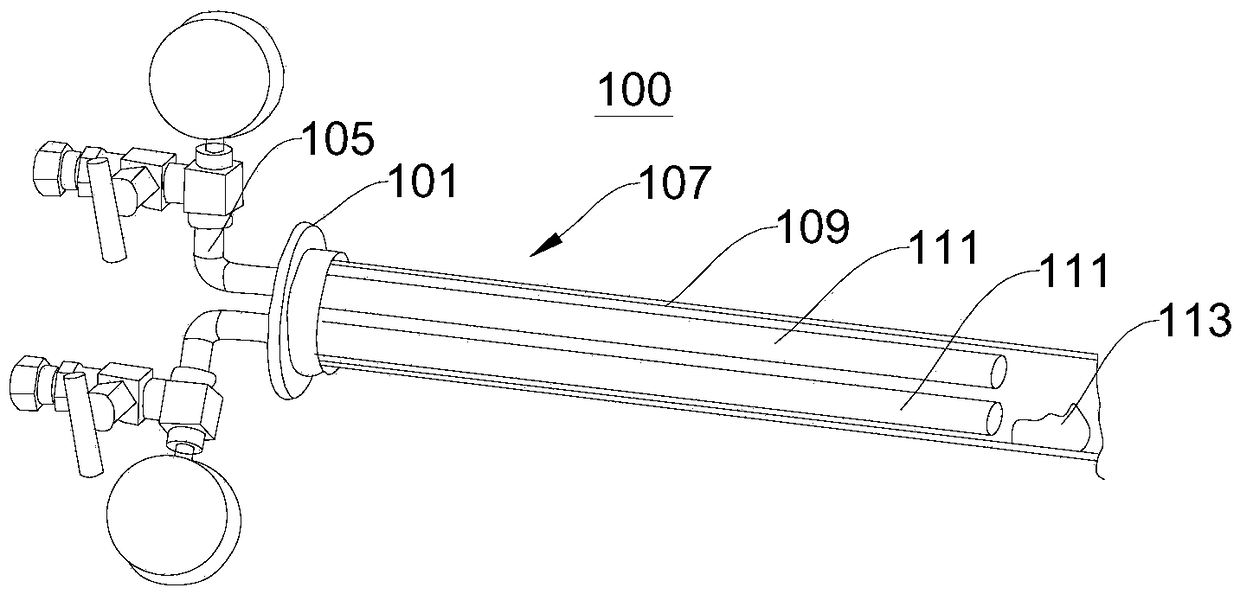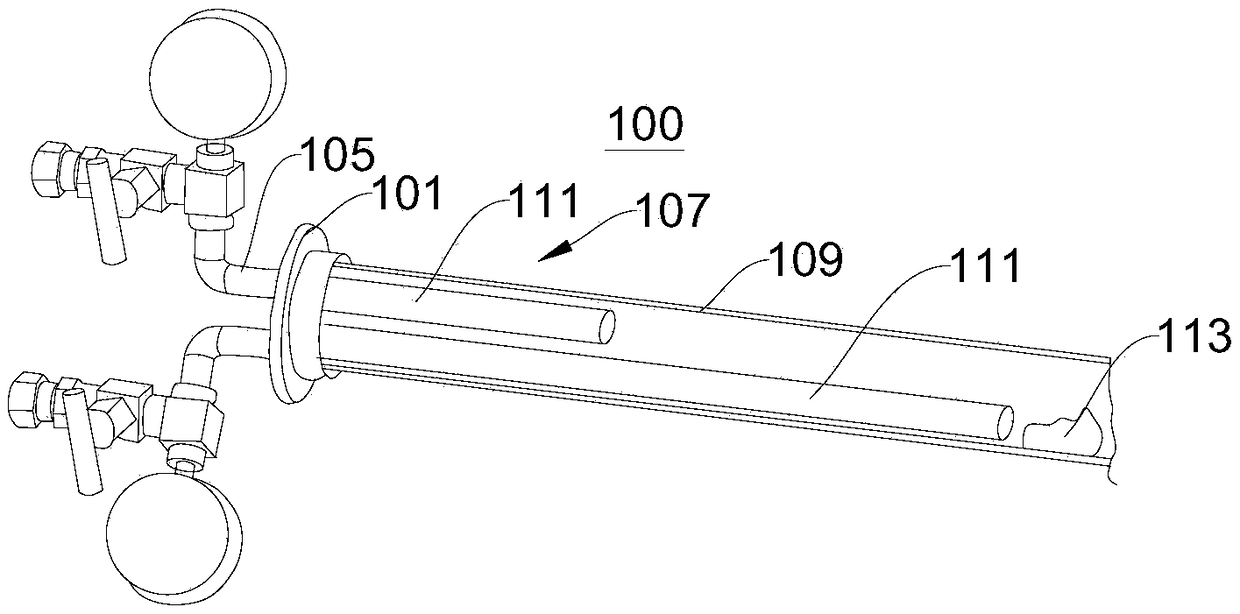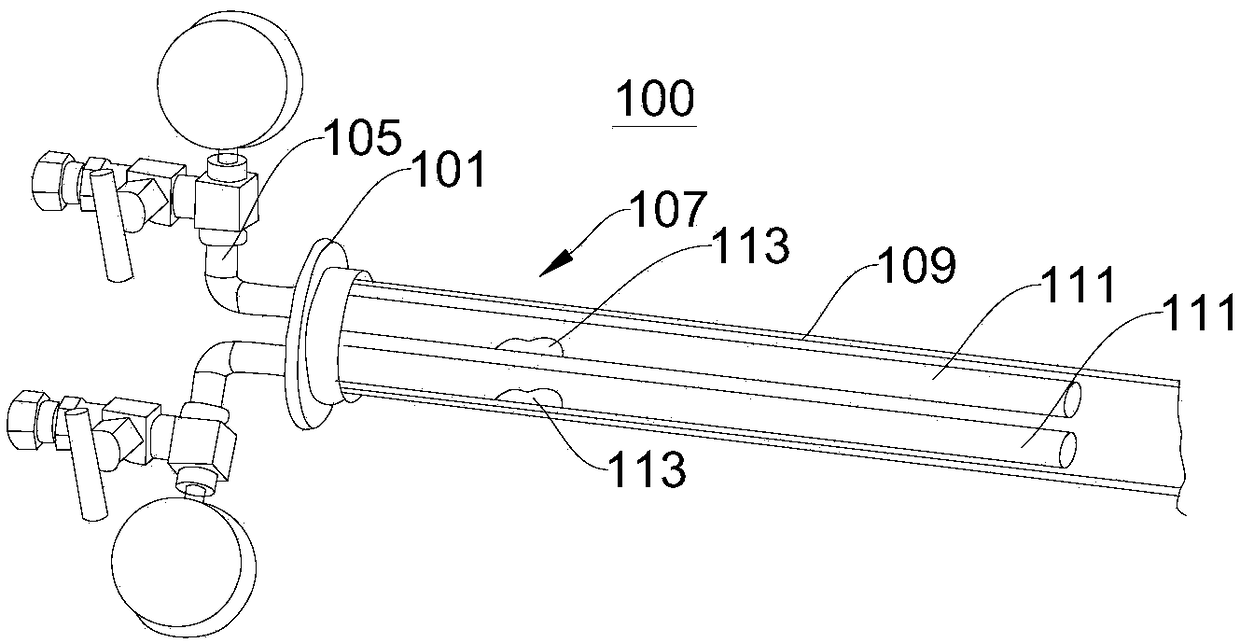Calcination container and method
A calcination and container technology, applied in the field of calcination, can solve the problems of sample mixing, difficulty in controlling the amount, and inability to accurately control the airflow size.
- Summary
- Abstract
- Description
- Claims
- Application Information
AI Technical Summary
Problems solved by technology
Method used
Image
Examples
Embodiment 1
[0050] figure 1 A schematic structural diagram of the first calcining vessel 100 provided in this embodiment. see figure 1 , the present embodiment provides a calcining container 100 , including: a flange 101 , at least two air inlet passages 105 and a container body 107 . The flange 101 is used to connect the gas inlet passage 105 and the container body 107, and the container body 107 is used to carry out the calcination reaction in a heated environment.
[0051] In detail, the flange 101 is provided with at least two gas inlets; the gas inlet channel 105 is connected to the gas inlets one by one, and is used to feed the reaction gas into the gas inlet; the container body 107 is used to heat the reaction gas, Thereby, the calcination operation is carried out, and the container body 107 includes a large quartz tube 109 and at least two small quartz tubes 111, the two small quartz tubes 111 are arranged in the large quartz tube 109, and the small quartz tubes 111 are arranged...
Embodiment 2
[0066] image 3 A schematic structural diagram of the calcining vessel 100 provided in this embodiment. see image 3 The difference between the calcining container 100 provided in this embodiment and the calcining container 100 provided in Example 1 is that the gas fed into the gas inlet passage 105 of the calcining container 100 provided in this embodiment is a reactive gas, and the materials 113 to be calcined are respectively placed in two small quartz tubes 111, and the reaction gas is input into the small quartz tubes 111 through the air inlet channel 105, so that the material 113 to be calcined is volatilized in the small quartz tubes 111 and enters the large quartz tube 109 with the reaction gas to carry out Calcination work. Calcination is carried out in this way, multiple samples can be placed in different small quartz tubes 111, so that multiple samples are volatilized under heating, and the calcining operation is carried out as the reaction gas enters the large qu...
PUM
 Login to View More
Login to View More Abstract
Description
Claims
Application Information
 Login to View More
Login to View More - R&D
- Intellectual Property
- Life Sciences
- Materials
- Tech Scout
- Unparalleled Data Quality
- Higher Quality Content
- 60% Fewer Hallucinations
Browse by: Latest US Patents, China's latest patents, Technical Efficacy Thesaurus, Application Domain, Technology Topic, Popular Technical Reports.
© 2025 PatSnap. All rights reserved.Legal|Privacy policy|Modern Slavery Act Transparency Statement|Sitemap|About US| Contact US: help@patsnap.com



